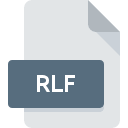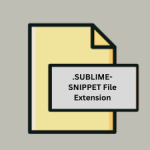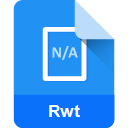.RLF File Extension

ArcGIS Report Layout File
| Developer | ESRI |
| Popularity | |
| Category | Page Layout Files |
| Format | .RLF |
| Cross Platform | Update Soon |
What is an RLF file?
The ‘.RLF’ file extension is associated with ArcGIS, a geographic information system (GIS) software developed by Esri.
Specifically, it refers to ArcGIS Report Layout Files, which are utilized within the ArcGIS platform for creating and managing report layouts.
These files play a crucial role in formatting and presenting data from GIS projects in a structured and visually appealing manner.
More Information.
The initial purpose of the ‘.RLF’ file was to provide a standardized format for designing and organizing reports generated from ArcGIS projects.
Before the introduction of ‘.RLF’ files, reporting capabilities within GIS were often limited to basic text outputs or required custom scripting to format data into readable reports.
With ‘.RLF’ files, users gained a structured approach to design reports directly within the ArcGIS environment, incorporating maps, charts, tables, and other visual elements.
Origin Of This File.
ArcGIS, developed by Environmental Systems Research Institute (Esri), introduced the concept of ‘.RLF’ files to enhance the reporting capabilities within GIS projects.
The need arose from the requirement to generate comprehensive reports that could effectively communicate spatial data analysis and findings to stakeholders and decision-makers.
File Structure Technical Specification.
‘.RLF’ files are typically structured as XML documents, which store detailed instructions on how data should be formatted and presented within a report.
The XML format allows for flexibility in defining report layouts, including page structure, header and footer content, data tables, graphics placement, and styling options such as fonts and colors.
This structure ensures that reports maintain consistency and can be easily modified or updated as needed.
How to Convert the File?
Converting ‘.RLF’ files may be necessary to share reports with users outside the ArcGIS ecosystem or for archiving purposes. Conversion methods include:
- Export to PDF: ArcGIS allows direct export of report layouts to PDF format, which preserves formatting and layout for easy sharing.
- Export to Excel: For data-centric reports, exporting to Excel format (.xls or .xlsx) allows recipients to manipulate data while retaining basic formatting.
- Export to HTML: Useful for web-based dissemination, exporting to HTML maintains visual integrity while allowing for interactive viewing.
Advantages And Disadvantages.
Advantages:
- Integrated Design: Users can design reports directly within ArcGIS, leveraging the software’s mapping and spatial analysis capabilities to create informative reports.
- Customization: ‘.RLF’ files support extensive customization through XML, allowing users to tailor reports to specific project requirements and presentation styles.
- Consistency: By standardizing report layouts using ‘.RLF’ files, organizations can ensure consistent branding and formatting across all generated reports.
- Efficiency: Automated report generation reduces manual effort, enabling users to quickly produce and distribute reports based on updated GIS data.
Disadvantages:
- Complexity: Editing ‘.RLF’ files directly in XML may require technical expertise, particularly for complex report layouts or advanced formatting requirements.
- Compatibility: Compatibility issues may arise when opening ‘.RLF’ files across different versions of ArcGIS or other GIS software that do not fully support all features of ‘.RLF’ files.
How to Open RLF?
Open In Windows
- Double-clicking on a ‘.RLF’ file usually opens it directly in ArcGIS if the software is installed. Alternatively, you can open ArcGIS and import the ‘.RLF’ file from the application.
Open In Linux
- While less common, ArcGIS does have limited support for Linux distributions. Users can open ‘.RLF’ files by running ArcGIS through Wine or similar compatibility layers designed for running Windows applications on Linux.
Open In MAC
- ArcGIS is available for MacOS, allowing users to open ‘.RLF’ files in the same manner as on Windows systems. Ensure the software is installed and updated to the latest version for compatibility.













